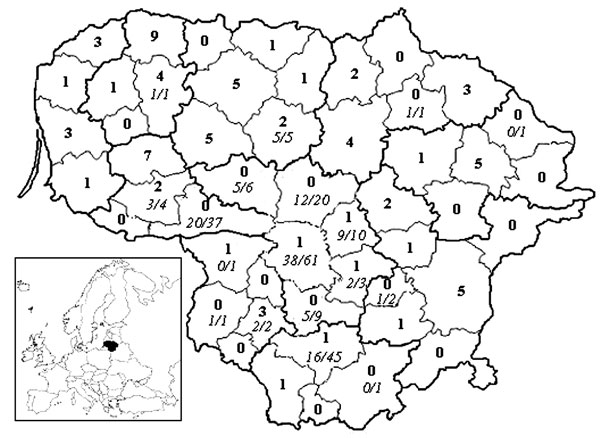Volume 13, Number 10—October 2007
Letter
Alveolar Echinococcosis, Lithuania
Figure

Figure. Number of patients (shown in boldface) diagnosed with human alveolar echinococcosis at the Hospital of Tuberculosis and Infectious Diseases, Vilnius University, from 1997 through July 2006 in districts of Lithuania. No. Echinococcus multilocularis–positive/no. red foxes (Vulpes vulpes) (shown in italics) investigated during 2001–2004 is indicated for some of the districts.
Page created: July 02, 2010
Page updated: July 02, 2010
Page reviewed: July 02, 2010
The conclusions, findings, and opinions expressed by authors contributing to this journal do not necessarily reflect the official position of the U.S. Department of Health and Human Services, the Public Health Service, the Centers for Disease Control and Prevention, or the authors' affiliated institutions. Use of trade names is for identification only and does not imply endorsement by any of the groups named above.